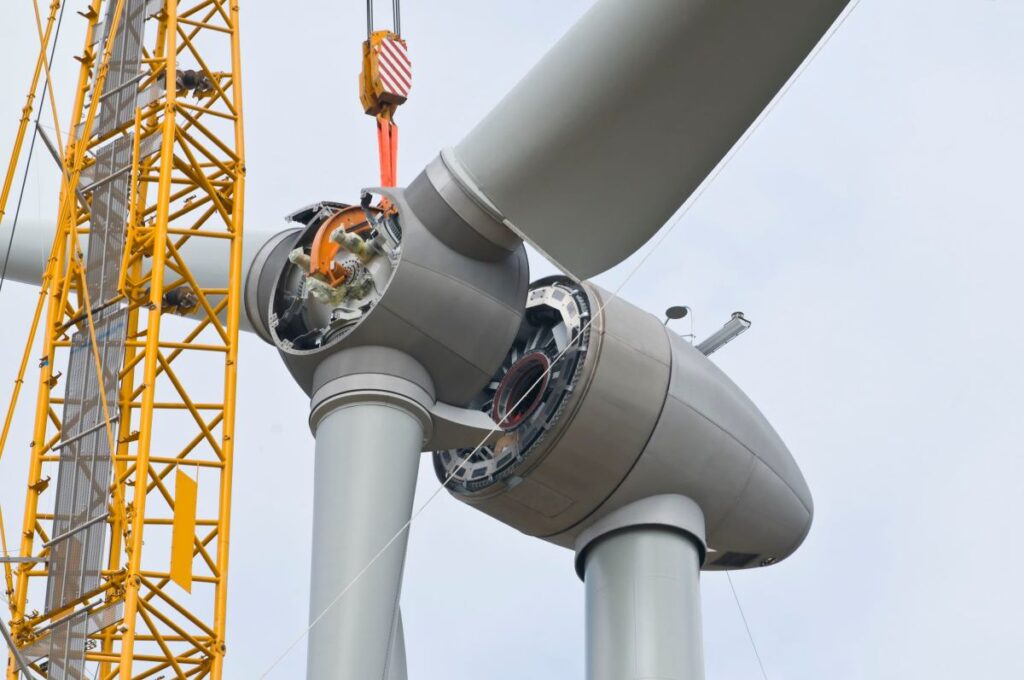Nuclear energy may also have acquired the lion’s proportion of attention from electricity hungry tech corporations over the last few months, with Google among them. But it appears that the ones new reactors won’t be enough for their AI pursuits: Google is now operating with partners to build gigawatts of renewable power, battery garage, and grid upgrades to strength its facts facilities.
Google announced Tuesday it signed a address renewable developer Intersect Power and funding fund TPG Rise Climate to spin up enough carbon-loose strength to drive numerous gigawatt-scale information facilities. Altogether, the funding in renewable electricity will run approximately $20 billion, and Intersect is already financing the first venture, the business enterprise instructed TechCrunch.
The deal also consists of an $800 million equity funding in Intersect Power, with TPG leading the round and CAI, Google, and Greenbelt Capital Partners taking part.
As tech businesses like Google rush to reinforce their AI competencies, they’ve embarked on a building spree so massive that specialists anticipate new AI data centers might be underpowered with the aid of 2027. That has pressured tech organizations to put money into new resources of electricity.
For the new challenge, a hypothetical 1 gigawatt-scale statistics center might be matched with an equivalent quantity every of wind, sun, and battery storage, which would have enough potential to remaining to 4 hours, Bloomberg stated. Both the information center and the renewable energy park would be connected to the equal point at the grid. Google stated it’s going to foot the bill for any required upgrades to the grid.
The hope is that the arrangement could help the information centers and renewable strength parks get connected speedy. There are eleven,860 active requests inside the U.S. From electricity manufacturers trying to connect with the grid, according to Interconnection.Fyi. A overall of two.05 terawatts of capacity are ready, almost double what’s presently installed and related. The majority of those are for solar and battery initiatives.
Google and Intersect could be taking a phased technique, with the first phase operational through 2026 and fully completed by 2027, highlighting the rate at which renewable strength may be deployed.
That pace have to positioned strain on nuclear strength startups and builders, all of which have longer timelines. The quickest nuclear assignment — Microsoft’s restarting of a reactor at Three Mile Island — is scheduled to come back online in 2028. Google’s deal with small modular reactor startup Kairos has a 2030 deadline for the first of numerous strength flora, while Amazon’s contract with SMR startup X-Energy is focused on the early 2030s.
All of that assumes the initiatives continue as deliberate and are completed on time, some thing that has thus far eluded the nuclear energy enterprise.
Nuclear electricity can also have acquired the lion’s share of interest from strength hungry tech organizations over the past few months, with Google among them. But it appears that the ones new reactors won’t be sufficient for their AI objectives: Google is now running with companions to construct gigawatts of renewable power, battery garage, and grid enhancements to power its statistics centers.
Google announced Tuesday it signed a address renewable developer Intersect Power and investment fund TPG Rise Climate to spin up enough carbon-loose strength to drive numerous gigawatt-scale facts centers. Altogether, the funding in renewable power will run approximately $20 billion, and Intersect is already financing the first mission, the company informed TechCrunch.
The deal also includes an $800 million fairness investment in Intersect Power, with TPG leading the spherical and CAI, Google, and Greenbelt Capital Partners taking part.
As tech organizations like Google rush to strengthen their AI skills, they’ve embarked on a building spree so considerable that experts expect new AI statistics centers might be underpowered by means of 2027. That has compelled tech businesses to put money into new sources of power.
For the brand new assignment, a hypothetical 1 gigawatt-scale statistics center would be matched with an equivalent quantity each of wind, sun, and battery garage, which could have sufficient capacity to last to 4 hours, Bloomberg reported. Both the facts middle and the renewable energy park would be related to the identical factor on the grid. Google stated it will foot the invoice for any required upgrades to the grid.
The wish is that the association might assist the statistics centers and renewable power parks get related speedy. There are eleven,860 lively requests inside the U.S. From electricity manufacturers looking to connect with the grid, according to Interconnection.Fyi. A general of two.05 terawatts of ability are ready, almost double what’s currently hooked up and related. The majority of these are for solar and battery tasks.
Google and Intersect will be taking a phased method, with the primary phase operational by way of 2026 and fully finished by 2027, highlighting the rate at which renewable strength may be deployed.
That pace need to put strain on nuclear strength startups and builders, all of that have longer timelines. The fastest nuclear assignment — Microsoft’s restarting of a reactor at Three Mile Island — is scheduled to come online in 2028. Google’s deal with small modular reactor startup Kairos has a 2030 cut-off date for the primary of several electricity flora, even as Amazon’s settlement with SMR startup X-Energy is targeting the early 2030s.
All of that assumes the tasks proceed as deliberate and are completed on time, some thing that has thus far eluded the nuclear energy enterprise.
